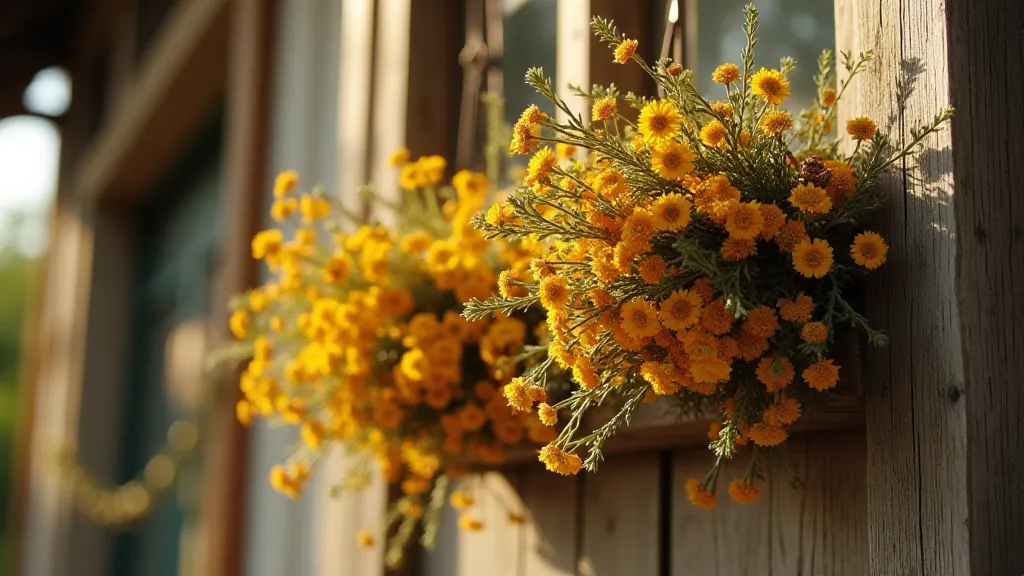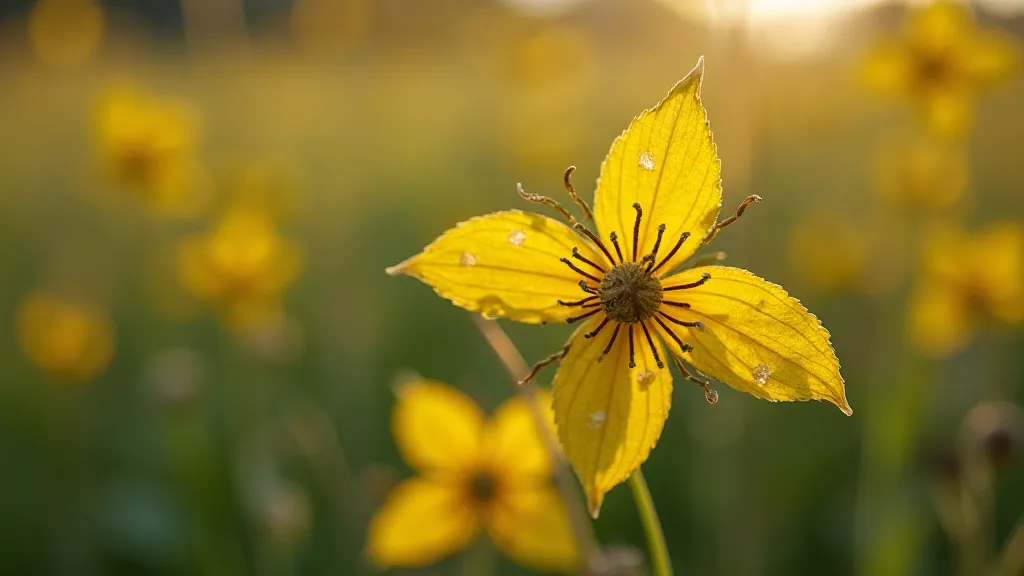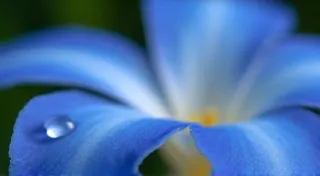Emerald Threads: Weaving the Story of St. John’s Wort into Modern Wellbeing
The scent of sun-baked fields, the rustling of dry grasses, the quiet hum of bees… these are the memories that rise when I think of St. John’s Wort. It's a plant steeped in history, intertwined with folklore, and recently, the subject of growing scientific scrutiny. More than just a herb, it feels like a living thread connecting us to centuries of tradition and a deeper understanding of nature’s remedies. My grandfather, a taciturn man of the earth, used to quietly steep it in hot water for his aches and what he called “the shadows.” I didn't understand then, but I do now – the shadows of sadness, of overwhelm, of simply feeling a little lost.
St. John’s Wort (Hypericum perforatum) isn't a newcomer to the world of herbs. Its name itself whispers of its long association with the summer solstice, a time of celebration, light, and the perceived banishment of darkness. Medieval communities adorned their doors and windows with St. John’s Wort garlands, believing they would ward off evil spirits and bring good fortune. This tradition, rooted in pagan rituals, gradually intertwined with Christian celebrations, creating the modern-day midsummer festivities we sometimes glimpse remnants of today.

A Botanical Portrait: The Plant Itself
The plant itself is remarkably distinctive. Look closely, and you’re likely to notice the tiny, translucent dots – the "perforations" – scattered across its leaves. These perforations are the origin of the plant's scientific name, a testament to the observant botanists who first described it. The bright yellow flowers, typically blooming in June and July, are visually striking and offer a readily identifiable marker for finding this herb in its natural habitat – sunny meadows, pastures, and along roadsides. It's a plant that rewards a patient eye and a willingness to wander.
While readily found in some regions, cultivation is also possible. Though not overly demanding, St. John's Wort prefers full sun and well-drained soil. It's also surprisingly resilient, able to thrive in a range of conditions. Propagation is easily accomplished via seeds or cuttings, allowing even novice gardeners to introduce this valuable herb into their gardens. The entire plant, particularly the flower heads, is used for medicinal purposes.
The Science Behind the Story: Exploring its Potential Benefits
The modern resurgence of interest in St. John’s Wort stems largely from its potential to support mood and emotional wellbeing. It’s often considered a natural alternative to conventional antidepressants, although it’s absolutely crucial to understand that it’s not a direct replacement and should never be substituted without consulting a healthcare professional. The historical use as a remedy for melancholia and "green sickness" (chlorosis, an iron deficiency anemia often affecting young women) hints at an intuitive understanding of its benefits that science is now beginning to unpack.
The active compounds in St. John’s Wort, particularly hypericin and hyperforin, are believed to play a key role in its potential therapeutic effects. Hypericin is a naphthodianthrone pigment that may affect serotonin reuptake, while hyperforin appears to influence multiple neurotransmitter systems, including serotonin, dopamine, and norepinephrine. This complex interaction is what makes St. John's Wort so intriguing to researchers.
However, it's vital to acknowledge that the scientific understanding of St. John’s Wort is still evolving. While some clinical trials have shown promise, others have yielded mixed results. The quality of standardized extracts can also vary, making it challenging to draw definitive conclusions. Furthermore, the plant's potential for herb-drug interactions is a significant concern, which we will explore further below.
Navigating the Considerations: Safety, Interactions, and Responsible Use
This is where the story takes a serious turn. St. John's Wort is not without potential risks. Its most significant concern lies in its ability to interact with numerous medications. Hyperforin, in particular, is a potent enzyme inducer, meaning it can accelerate the breakdown of certain drugs in the body, potentially reducing their effectiveness. This includes commonly prescribed medications like antidepressants, birth control pills, blood thinners, and immunosuppressants.

Crucially, anyone considering using St. John’s Wort should consult with their doctor or a qualified healthcare professional beforehand. This is not a DIY project. Disclosing all medications and supplements is absolutely essential to avoid potentially dangerous interactions.
Furthermore, St. John’s Wort can increase photosensitivity, making the skin more vulnerable to sunburn. Individuals using the herb should take extra precautions to protect their skin from excessive sun exposure.
Pregnant and breastfeeding women should also avoid St. John’s Wort, as its safety in these populations has not been established.
More Than a Remedy: A Connection to the Earth
My grandfather’s quiet wisdom, the scent of that steeped infusion, and the feeling of connection to something ancient – these are the reasons I revisit St. John’s Wort. It’s a reminder that healing isn’t always about sterile labs and complex formulas; sometimes, it’s about recognizing the inherent power of the natural world and approaching it with respect and understanding.
Growing St. John’s Wort, or simply observing it in the wild, offers a grounding experience. It’s a chance to slow down, to appreciate the simple beauty of a flower, and to reconnect with the rhythms of the earth. It’s a plant that, handled with knowledge and care, can be a powerful ally in the journey toward wellbeing. But remember, this emerald thread is best woven into the tapestry of your life with the guidance of trusted expertise.






